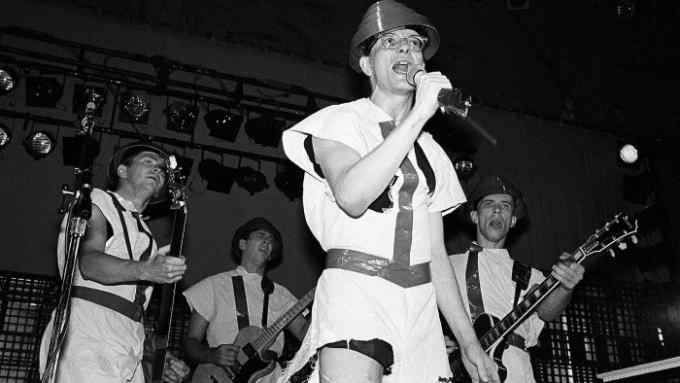The Life of a Song: ‘Running Up That Hill’

Simply sign up to the Life & Arts myFT Digest -- delivered directly to your inbox.
The female face of pop in the 1980s was Madonna, the ultimate material girl and America’s least convincing virgin. Pop’s feminist heart and soul, however, floating in an undoubtedly sensual but altogether more spiritual world, was that British original and high priestess of interpretative dance Kate Bush. Every woman artist ever after labelled “kooky” by male rock critics — from Tori Amos and Björk to Bat for Lashes and Florence and The Machine — cites Bush as an influence.
Bush burst into the charts at the age of 19 with 1978’s “Wuthering Heights”. At 27, though, she was at risk of becoming a has-been in the middle of that brash decade, the 1980s. Her fourth album, 1982’s The Dreaming, had flopped, and she needed a hit.
Having left London for a 17th-century farmhouse in Kent, Bush spent as much time composting as composing. Yet the songs that germinated in this rural idyll would grow into her most commercially successful album, Hounds of Love, released on September 16 1985. That August’s lead single, all galloping drums and insistent groove, was “Running Up That Hill”, its distinctively wonky riff — like someone wiping a particularly sticky windscreen — the product of Bush’s fascination with the Fairlight CMI synthesiser.
“Running Up That Hill” is a song about trading places, an implicit plea for romantic equality (“Tell me, we both matter, don’t we?” Bush sings) that soon evokes a more profound idea: how can we ever know what another person is thinking or feeling? And to gain that insight, it takes the old notion of a Faustian bargain up an almighty notch. Bush’s initial title was “A Deal with God”, but her record company persuaded her that this would be anathema in countries with strong religious beliefs. The single, then, is just “Running Up That Hill,” although the album tracklist includes “A Deal with God” in parenthesis. Either way, it was manna from heaven for Bush’s career: Hounds of Love knocked Madonna’s Like a Virgin from the top of the UK album charts.
Thirty years on, “Running Up That Hill” still resonates. You couldn’t find two more divergent covers than the spry electropop offered in 2015 by the Toronto band Beams, who appear to base their synth sound on their apartment’s doorbell, and the woefully gruff hard-rock mauling presented this year by the Norwegian Jørn. (Give that man a lozenge, quick.)
Before those versions, there were Placebo’s murky and ominous whisperings in 2003, apparently raking over the Satanic coals (which sort of misses the point), and, from the same year, the horribly windy Dutch band Within Temptation’s symphonic-metal farrago (with possible pan pipes).
Much better are Chromatics’ skittering, late-night ambient cut from 2007 and Wye Oak’s mellow, bluesy live session for the AV Undercover website in 2014, which draws out its fundamental yearning.
“Running Up That Hill” also gives its name to an entire Kate Bush covers album in aid of “pro-choice reproductive rights”; somewhat incongruously, the self-styled “One Man Wolf Pack” from Oakland, California, Casey Chisholm, plays the number as a strung-out cyber-dirge.
The song endures because it addresses our insecurities. As Bush said in 1985, it’s about “the strength that is created between two people when they’re very much in love, but that strength can also be threatening, violent, dangerous”. Proof of the track’s qualities came in 2012 on a global stage. Bush re-recorded the vocal to her original 12-inch remix for a climatic part of the closing ceremony of the London Olympics. It was a stirring demonstration of soft power — both Britain’s and that of pop itself.
Photograph: Alamy

Comments